Birds can be found all over the planet. Some are small and harmless, while others are more dangerous. Some birds in the latter group have even been known to attack humans… but most are simply predators of other animals. In this article, we list some of the world’s most dangerous birds and learn some interesting facts about them.
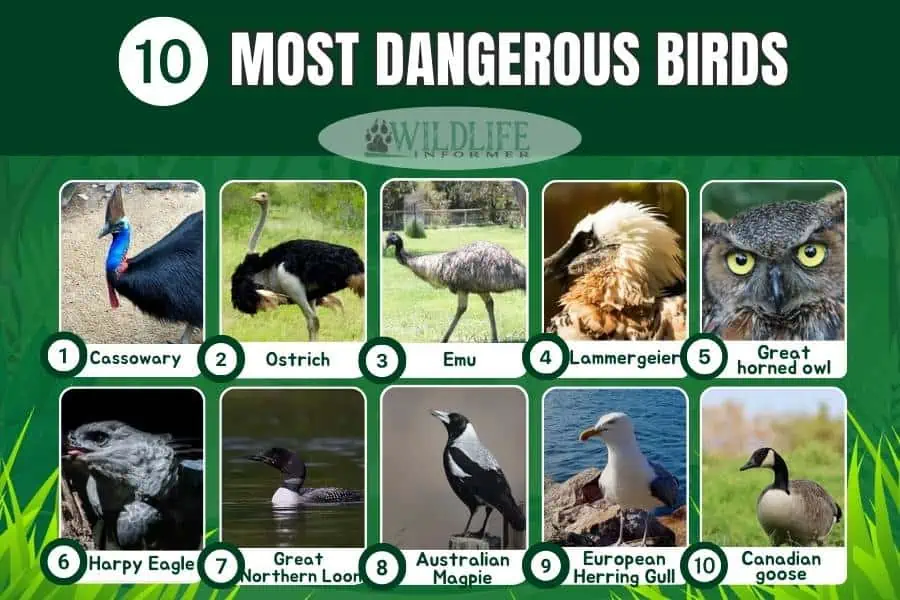
10 most dangerous birds
The following is a list of some dangerous birds, starting with arguably the most dangerous… the ostrich.
1. Cassowary
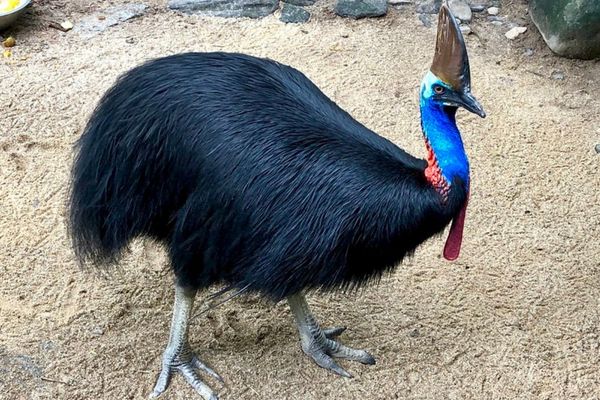
Scientific name: Casuarius casuarius
The Cassowary is a large, flightless bird that lives in the tropical forests of New Guinea and neighboring islands such as Aru and Maluku. This species prefers swamps, savannas and eucalyptus forests, where it feeds mainly on fruits found on the ground.
Cassowaries cannot fly due to their small wings and large body. They can grow up to 6 feet tall and weigh more than 100 pounds. However, these animals are good swimmers with strong legs that allow them to run up to speeds of 50 km/h and jump up to 4 feet high.
They are also capable of causing serious injury with their long claws and have been known to attack humans, which makes them dangerous birds.
2. Ostrich
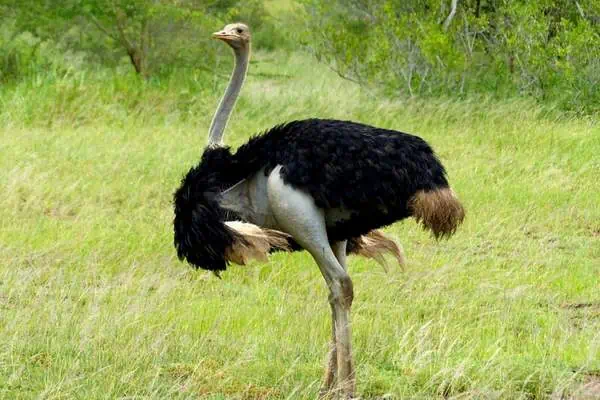
Scientific name: Struthio camelus
The ostrich is a large bird found in Asia, Africa and Arabia. They are typically found in dry, sandy environments and are one of the few animals that can survive without a lot of water.
It has a large body and long neck, can grow up to 9 feet tall and weigh 300 pounds. This makes them the largest bird in the world. Because of their small wings, ostriches cannot fly, but they can run at speeds of up to 70 km/h.
They also have powerful claws on their feet that they use to defend themselves against predators if they feel threatened. If ostriches are provoked enough, they can kill humans with their kicks and claws.
3. Emu
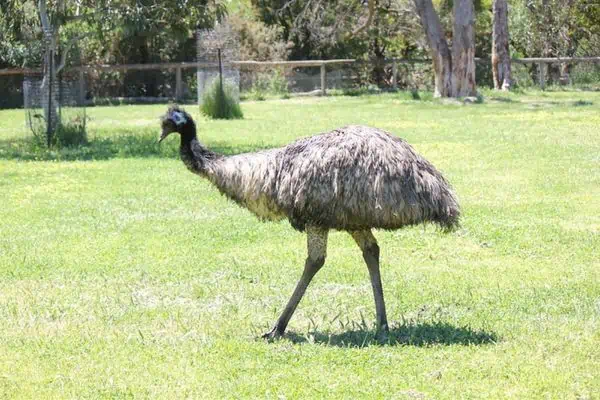
Scientific name: Dromaius novaehollandiae
Emus are large flightless birds from Australia. They are the second tallest bird after the ostrich and can be found in a variety of habitats, including those near the coast. These animals have large beaks and strong legs that allow them to run at speeds of up to 50 km/h. They can grow up to 6 feet tall and weigh more than 100 pounds.
These large birds are considered dangerous because ostriches can run faster than humans and kick hard at predators. It’s also difficult for people to escape an angry emu if attacked because their legs are so long (and strong).
4. Lammergeier
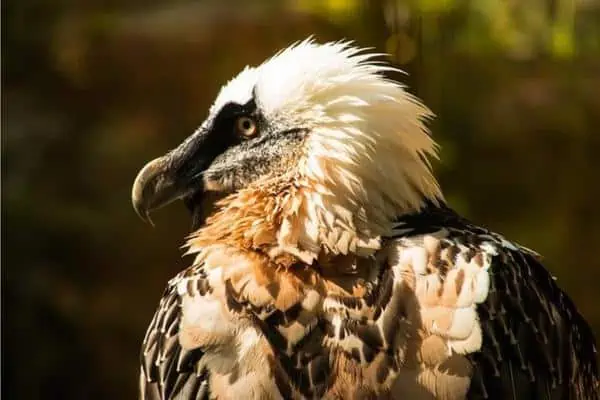
Scientific name: Gypaetus barbatus
The lammergeier, also known as the bearded vulture, is a large bird of prey found in the mountains of Africa, Europe and Asia. They are large vultures with a wingspan of up to 9 feet and a weight of up to 17.2 pounds.
These birds of prey can also fly at speeds of up to 40 miles per hour. Lammergeiers are aggressive territorial birds, they will defend their territory against other animals in the vicinity. They often fly at high altitudes and will attack from the air if a potential threat approaches their territory, especially during the breeding season, when they are more aggressive.
Despite the fact that these animals are known for their ability to scavenge and eat dead animals, lammergeiers have been observed eating other birds and turtles.
5. Great horned owl
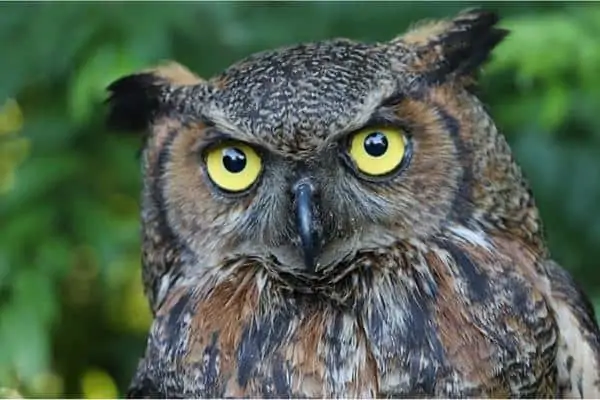
Scientific name: Bubo virginianus
Great horned owls are large owls native to North America and can be found in Central and South America. This species of owl has a wingspan of up to 4.6 feet and weighs up to 1.4 kg. They are also called ‘tiger owls’ because they are one of the scariest owls.
These birds are one of the most common species in America and can be found in a variety of habitats, including forests, swamps, grasslands, and deserts. The great horned owl is considered dangerous because it can attack larger animals if it feels threatened. They are fiercely territorial and will attack anyone who gets too close to their nest.
6. Harpy Eagle
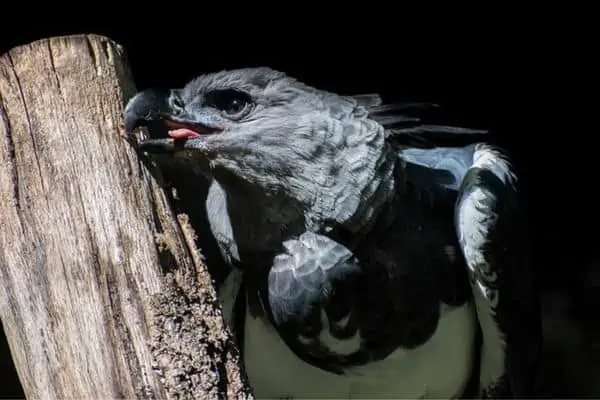
Scientific name: Harpia harpyja
The Harpy Eagle is one of the largest eagles in the world and the most powerful bird of prey. It has a wingspan of up to 6 feet and a length of up to 3 feet. Harpy Eagles have 5-inch long talons and strong legs that they use to catch prey.
They mainly eat monkeys and sloths, but they may also hunt deer or anteaters. These eagles have extremely strong claws with a grip force of 530 psi, meaning they can instantly crush the bones of their prey and kill them instantly, and provoking them is a risky move.
7. Great Northern Loon
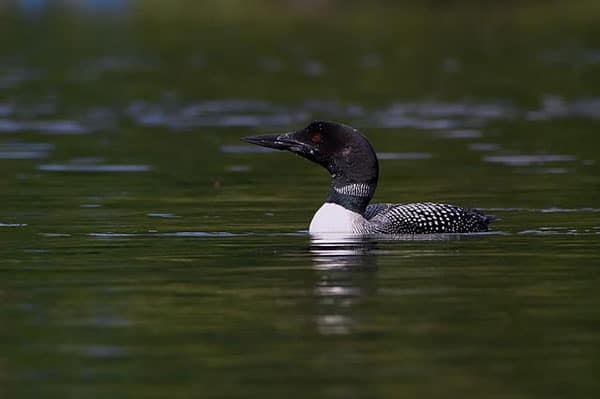
Scientific name: Gavia immer
The Great Northern Loon is a large waterbird with a wingspan of 5 feet and a weight of up to 18 pounds. They are distinguished by their black head, white underparts and checkered pattern on their back. Great Northern Loons can be found throughout North America, but they are most common in Canada, where they can be found in large lakes and ponds.
They are extremely territorial and can become violent towards humans if they come close to the nest or young, which is why this behavior is considered dangerous. They will try to stab an intruder in the stomach or even the head or neck with their sharp beak.
8. Evil is Australia
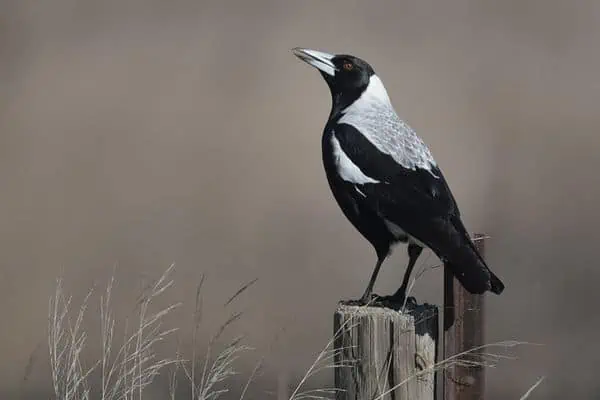
Scientific name: Gymnorhina tibicen
The Australian magpie is a medium-sized black and white bird native to Australia. They are about 17 inches long and have a wingspan of up to 2 feet. These creatures prefer open habitats where they can forage on small animals and insects on the ground.
Although only a small percentage of these birds are known to be harmful to humans, it is still possible that anyone could be attacked, especially during the breeding season. When humans get too close to their nests or chicks, Australian magpies will dive bomb, swoop down and even attack from the ground. However, this defensive behavior stops when the chicks leave the nest.
9. European herring gull
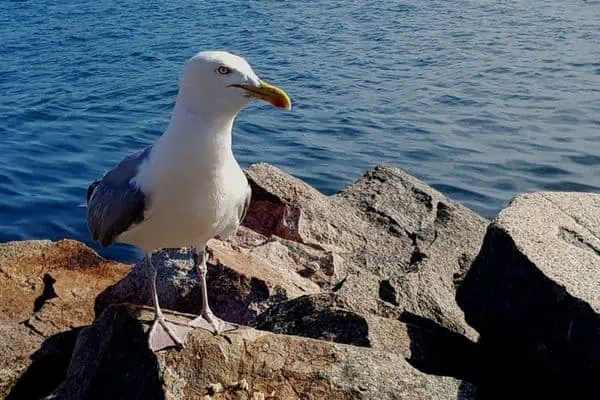
Scientific name: Larus argentatus
The European herring gull is a large gull that can be found throughout Europe, Asia and North America. They are distinguished by their white head, neck, underparts, and light gray back. European herring gulls have a wingspan of 5 feet and weigh about 3 pounds.
Due to its large size and aggressive nature, the European Herring Gull can be considered dangerous. They can become aggressive towards humans and other animals that come near their nests during the breeding season.
These seagulls are known for their ability to dive bomb and use their legs to attack. They also gather and attack flying predators, alerting other herring gulls with warning calls.
10. Canada Goose
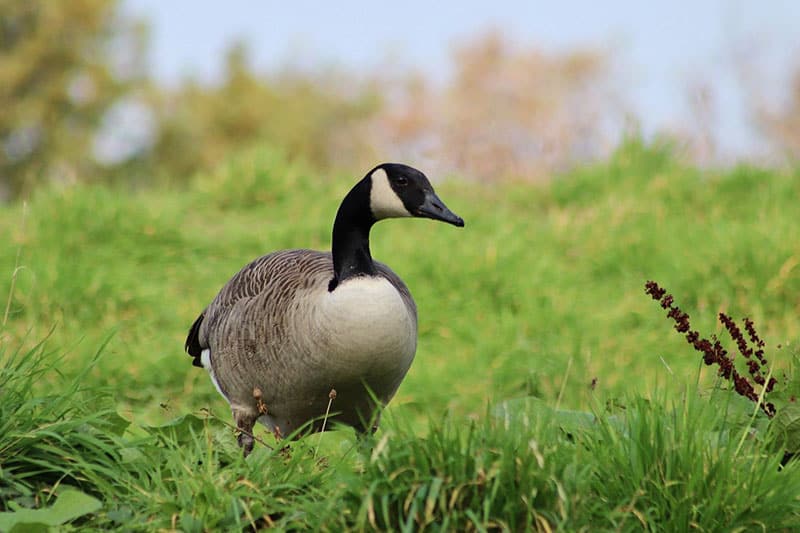
Scientific name: Branta canadensis
The Canada goose is a large bird native to the northern regions of North America, including Canada. They can grow up to 3.6 feet long and weigh up to 24 pounds. Canada geese prefer open habitats near ponds, lakes, rivers and freshwater shores.
These birds can also be dangerous as Canada geese are known to attack humans if they feel threatened by them or their presence, especially when humans approach their nests. They are also capable of attacking other waterfowl to protect their young.





